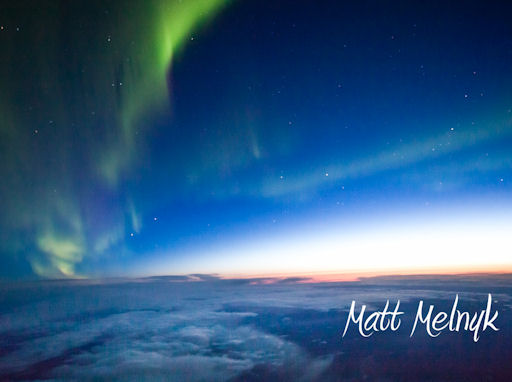INCOMING CME: On May 11th, a coronal mass ejection raced away from the sun traveling ~1000 km/s. The fast-moving cloud will deliver a glancing blow to Earth's magnetic field on May 14th around 14:30 UT, according to a forecast track prepared by analysts at the Goddard Space Weather Lab. Mars is also in the line of fire.
UNSET OVER PARIS: Huge sunspot AR1476 poses a threat for strong solar flares, but for the past two days the so-called "active region" has been mostly quiet. What the sunspot lacks in drama, however, it more than makes up for in beauty. Consider this photo of Friday night's sunset over Paris:
"Shooting from the Bridge of Concorde, I captured the sunspot setting behind the Eiffel Tower," says photographer VegaStar Carpentier. The light of the low-hanging sun was perfectly dimmed for a 1/1000s exposure @ ISO 400. "I used a Canon EOS 1000D."
The quiet is probably temporary. NOAA forecasters estimate a 65% chance of M-class flares and a 15% chance of X-flares during the next 24 hours.
more images: from the Charlie Bates Solar Astronomy Project of Atlanta, GA; from Luis Argerich of Buenos Aires, Argentina; from Eduard Garcia Ribera of Ager, Lleida, Catalonia; from Andy Devey of Sorbas, Spain; from Vasilis Wooseas of Greece, Amvrakikos Wetlands National Park; from Giuseppe Petricca of Pisa, Tuscany, Italy; from Catalin Fus of Krakow, Poland
AURORAS FROM 20,000 FEET: A solar wind stream hit Earth on May 9th, rattling our planet's magnetic field with reverberations that lasted nearly three days. Most of the resultant auroras were overwhelmed by the midnight sun at high latitudes. Most, but not all. Flying photographer Matt Melnyk found a window of visibility at 20,000 ft:
"I was travelling from Edmonton, Alberta, to Yellowknife NWT between 1:00 am and 3:30 am on May 11th when I witnessed this dramatic display," says Melnyk. "With 0% light pollution at 20,000 feet, the cockpit of the aircraft offers a great view for the aurora."
More auroras could be in the offing. A CME is expected to deliver a glancing blow to Earth's magnetic field on May 14th. NOAA forecasters estimate a 20% to 30% chance of geomagnetic activity when the cloud arrives. Observing tip: Pick the window seat.
Magnetic storm alerts: text, phone.
more images: from Paul Beebe of Worthy Lake, Upsala, Ontario, Canada.

![]()
Solar wind
speed: 440.0 km/sec
density: 1.9 protons/cm3
explanation | more data
Updated: Today at 1616 UT
![]()
X-ray Solar Flares
6-hr max: B8 1008 UT May13
24-hr: C7 0814 UT May13
explanation | more data
Updated: Today at: 1600 UT
![]()
![]()
![]()
Daily Sun: 13 May 12
![]()
![]()
Sunspot 1476 is decaying, but it still has a 'beta-gamma-delta' magnetic field that harbors energy for X-class solar flares. Credit: SDO/HMI
![]()
![]()
![]()
Sunspot number: 85
What is the sunspot number?
Updated 12 May 2012
Spotless Days
Current Stretch: 0 days
2012 total: 0 days (0%)
2011 total: 2 days (<1%)
2010 total: 51 days (14%)
2009 total: 260 days (71%)
Since 2004: 821 days
Typical Solar Min: 486 days
Updated 12 May 2012
The Radio Sun
10.7 cm flux: 130 sfu
explanation | more data
Updated 12 May 2012
![]()
![]()
![]()
Current Auroral Oval:
![]()
Switch to: Europe, USA, New Zealand, Antarctica
Credit: NOAA/POES
![]()
![]()
![]()
Planetary K-index
Now: Kp= 2 quiet
24-hr max: Kp= 3 quiet
explanation | more data
![]()
Interplanetary Mag. Field
Btotal: 6.0 nT
Bz: 4.1 nT south
explanation | more data
Updated: Today at 1616 UT
![]()
![]()
![]()
Coronal Holes: 13 May 12
![]()
![]()
There are no large coronal holes on the Earthside of the sun. Credit: SDO/AIA.






